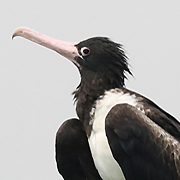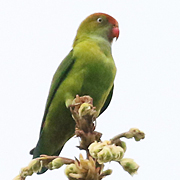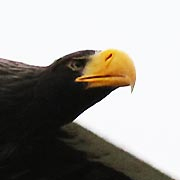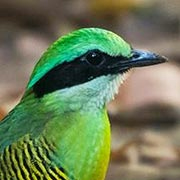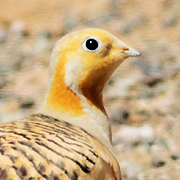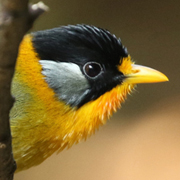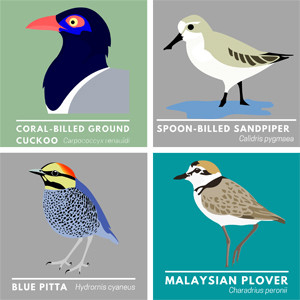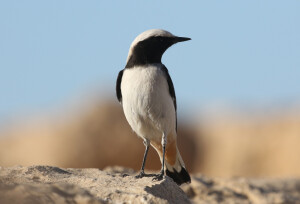
For those of us who travel with non-birding partners it can sometimes be tricky to balance enjoying time together somewhere interesting and the craving to maximise the opportunity to see new birds in new places. Personally, having a good holiday with my wife is the most important thing when planning trips together but doing some research to discover where interesting birds can be found nearby is always something I do in order to book hotels close to some likely habitat. When planning for a short trip to Jordan in early October 2024 I was delighted to find that there were a number of new species for me found in and around the famous historical site of Petra that are frequently seen. So, after picking up our hire car and driving from Amman to Wadi Musa I was looking forward to seeing the ancient ruins and some of the birds of the region, including the very range-restricted Sinai Rosefinch.
We stayed at the very comfortable Petra Moon Hotel, with a view over the visitor centre and hills behind it, which provided us with an excellent breakfast. After breakfast I had a little time to look around the rocky habitat just outside of the hotel while my wife got ready for the day’s hiking. Early morning was pleasantly cool and a walk of less than one hundred metres took me to a spot where I could overlook the rocky terrain. In fact, from the hotel car park I was able to watch a small group of Pale Crag Martins swooping around catching their breakfast before going anywhere at all.
As is normal in most places their was a flurry of activity in the early morning with Laughing Dove very obvious and groups of Tristram’s Starlings noisily flying in to congregate on a few buildings and roadside lamposts with Black Redstart and Spotted Flycatcher perched on fence posts. One of the species I was most keen to see was Sinai Rosefinch. With a very restricted world range this was a chance to enjoy this attractive bird. What I did not expect was how easy it was going to be to see, with a fine male feeding very close by as soon as I had crossed the road to start birding.
Eventually he flew away to feed elsewhere and as he did so, a female sprung up from behind another rock to join him. Perched on some wire were three non-descript looking birds which turned out to be Rock Sparrows but a flash of black and white drew my attention away from them. I had the pleasure of seeing several species of smart Wheatear species in Central Asia earlier in the year and there were a couple more I was hoping to catch up with in Jordan so I was excited when my investigation into the “pied flash” resulted in finding a lovely Mourning Wheatear. At first I was happy to watch it from a distance of around fifty metres but as it gradually came closer I got ready to try and photograph it. However, as I was about to get a shot of it, the bird flew right past me to a wall right outside of our hotel room where it found a supply of insects to feed on. I managed to get fairly close to it and as it was foraging it came within a few feet of me at one point; a great encounter.
My wife was almost ready to explore Petra but there was time to add one more bird before doing so. A few years ago I spent some time in Oman where Desert Lark was supposed to be common but I ened up having to search for it on my last day, eventually finding one emaciated individual, so it was nice to see a pair of these birds, both in good condition, albeit a different subspecies. They seemed to enjoy foraging among the droppings of various species of livestock.
By now it was time to swap birds for the ancient ruins of Petra. Although things were much warmer by this time throughout our day here it was never unpleasant, only working up a very lght sweat during the middle of the day, although the sun was very intense meaning that we covered up like locals. Coming from Thailand, the weather at Petra felt very pleasant indeed.
One thing that I was not expecting were the distances that we covered to see all the main parts of Petra, walking a total of 15 kilometres throughout the day. However, the most famous part of Petra, The Treasury, was only a bout a 2km walk from the visitor centre and it is truly a magical place, although I was undisturbed by birds through this part of the day.
Walking on further from this point, after spending plenty of time admiring the view and taking photos, we walked though a canyon which was glowing beautifully in the late morning light. The canton opened out here and there were a few birds including House Sparrows, a Lesser Kestrel, a couple of Fan-tailed Ravens soaring and a pair of Tristram’s Starlings.
The Nabateans, who founded Petra, were subsumed into the Roman Empire so that some of the ruins at this site are from the Roman period including an ampitheatre just to the left of where the Tristram’s Starlings were hanging out but it was a bit further along the trail, overlooked by a series of tombs carved into the rockface, where my attention was drawn, once again, to birds rather than history. Flying up onto a prominent rock from a hidden area on the ground, a black bird looked like something I had not seen up to this point and so it proved with a White-crowned Wheatear. In keeping with the previous Wheatear experience, while standing watching this bird it came really close to me when catching a food item. The fact that it didn’t have a white cap was ungortunate but this indicated that it was a young bird rather than a misidentification.
While enjoying this much-anticipated bird a high-pitched call from a rock just above my head alerted me to another bird: Blackstart. When studying eBird sightings it appeared that this was one of the commonest species in this region so I was surprised to have had to wait so long to see it but also happy to to get such excellent and prolonged views. In fact it turned out that a pair of Balckstarts were occupying this spot and neither of them ever fluttered more than a few metres away from me. Perhaps not the most visually striking of birds but it had a nice song and performed so well.
For much of the remainder of the day interest was focussed on a long walk up a ravine to The Monastery, another amazing building carved into the rock face with lots of opportunities to buy souvenir fabrics along the way. There were , however, several more Mourning Wheatears, Tristram’s Starlings and Blackstarts. A White-spectacled Bulbul added an avian interlude at lunchtime, a selection of grilled meats; it looked like the bulbul would have claimed some of the scraps if it had seen an opportunity.
Some of the scenery along the way was quite spectacular as we climbed up higher, indeed the rocky scenery in the overall area was otherworldly even as we drove away from Petra the next day.
The walk was a long one, mostly in exposed areas and the steep steps up to The Monastery meant that we took a few breaks along the way and on one of these breaks a little pink splash of colour caught my eye; another Sinai Rosefinch. Another nice male Rosefinch once again showed itself nicely, gradually coming closer as it found scraps of food among the rocks.
All that remained was to make the considerable walk back to our hotel, although with the day drawing on the shadows lengthened and the cooling air the temperature and light were both pleasant while our legs began to feel quite heavy. There was a flurry of bird activity in the very late afternoon with Fan-tailed Ravens, Mourning Wheatear and Blackstart becoming more obvious before we watched the sun set behind the hills from the comfort of our room, with our feet up, drinking a cup of tea.
Join me on one of my birding tours to a variety of countries – Calidris Birding Tours


 November 14th, 2024
November 14th, 2024  Nick
Nick 
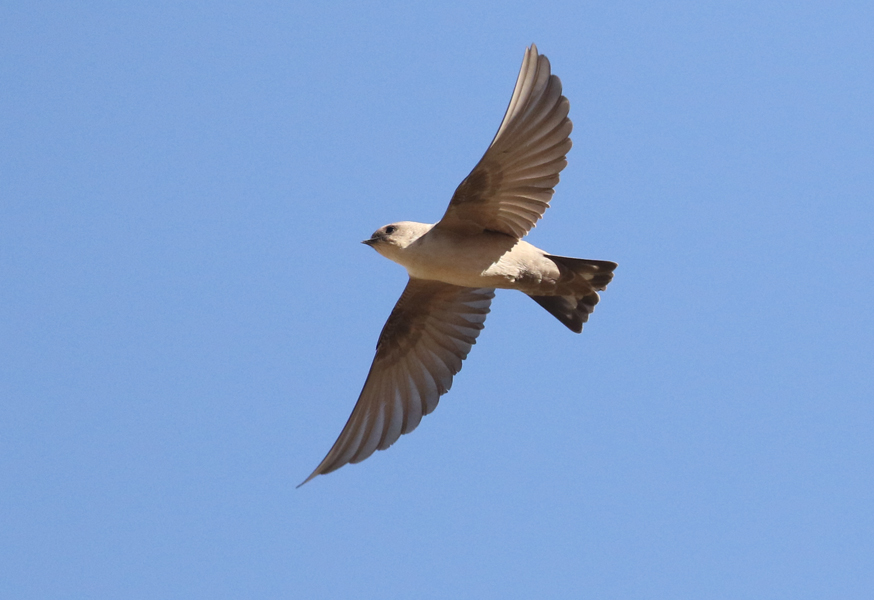
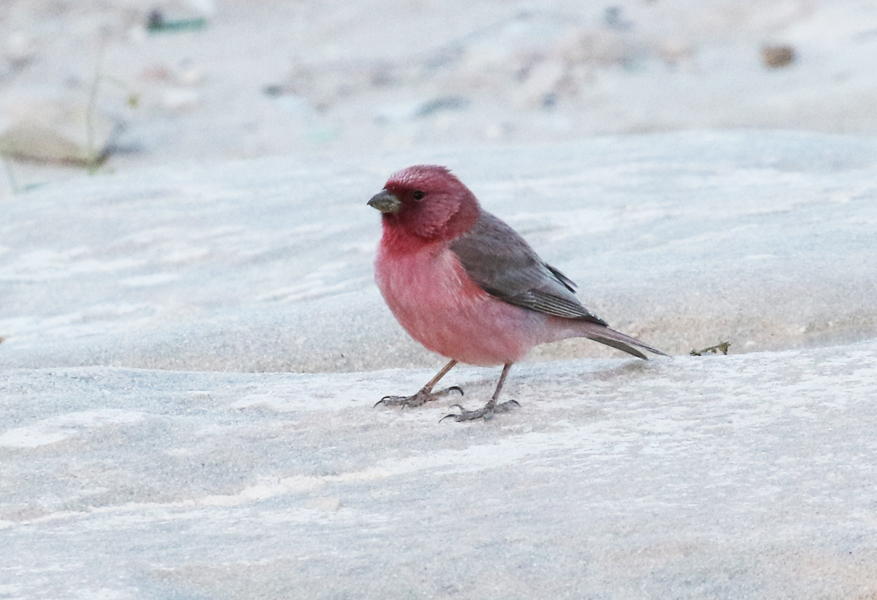
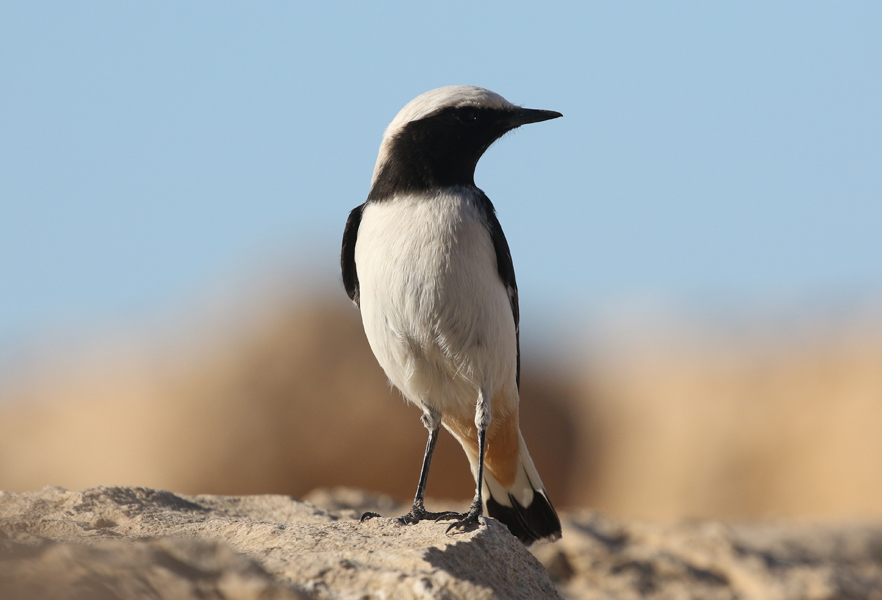
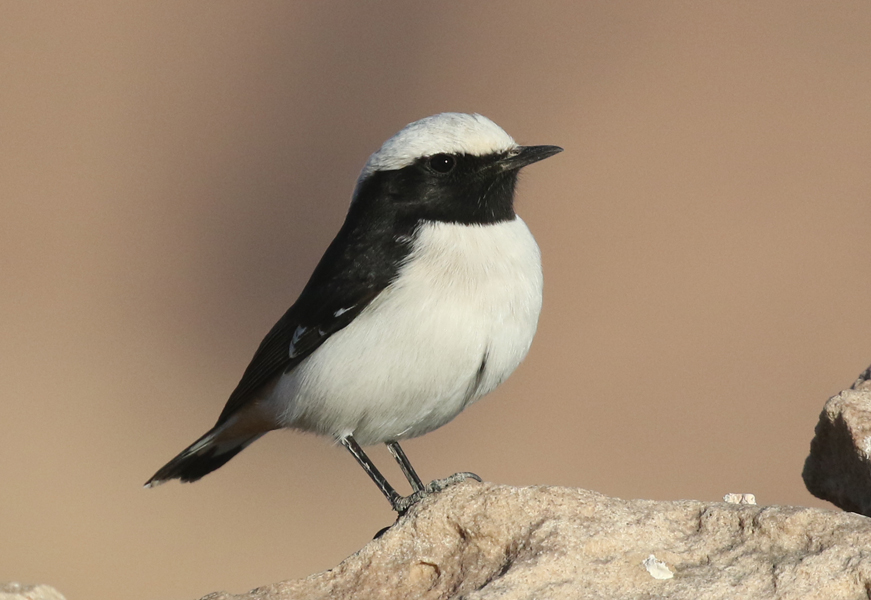
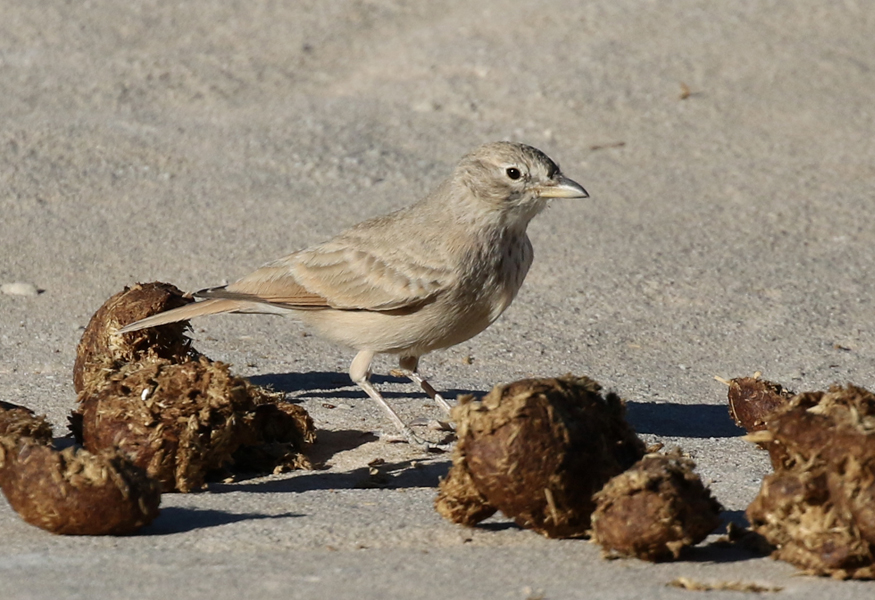



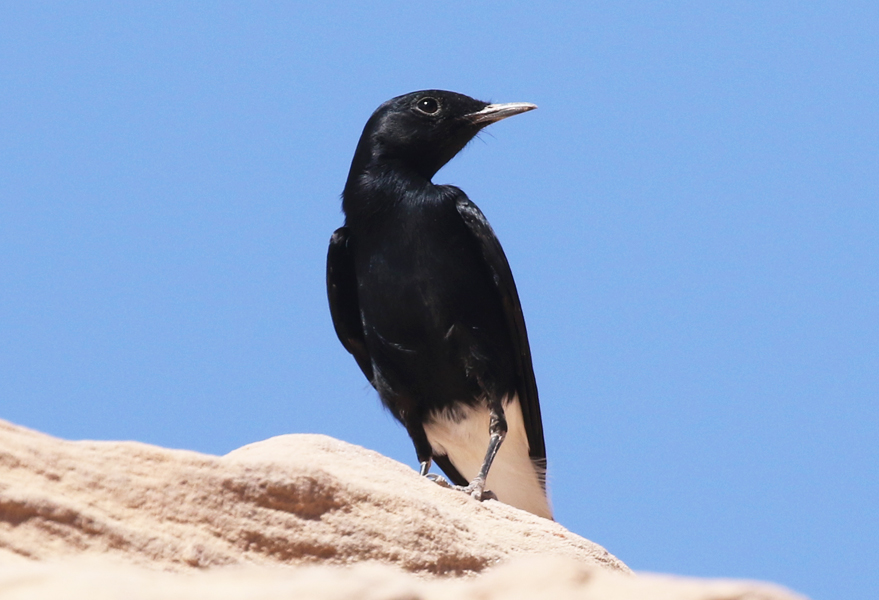
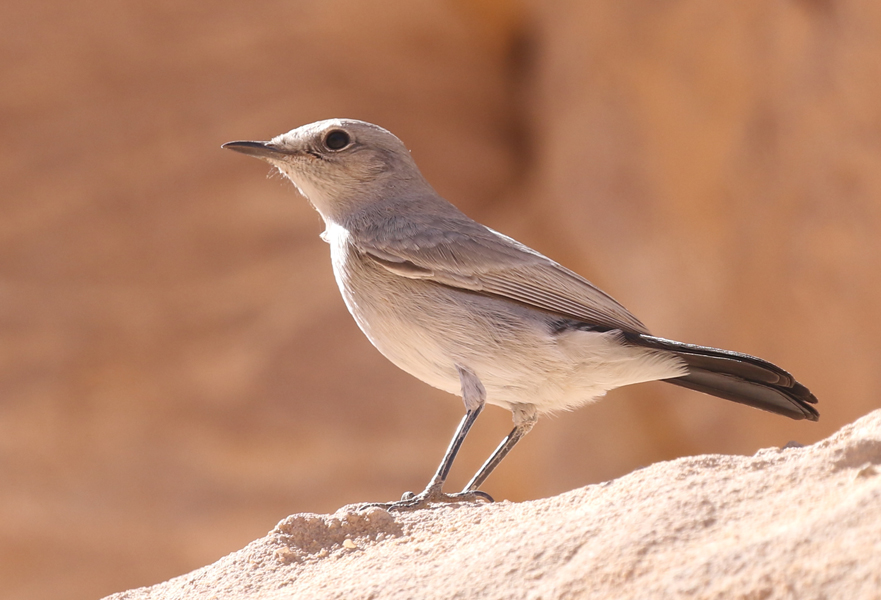
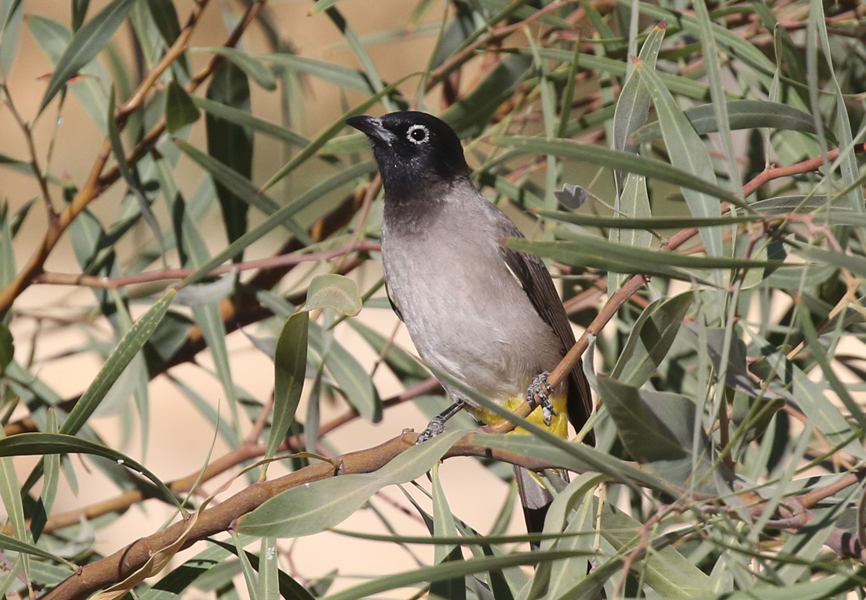
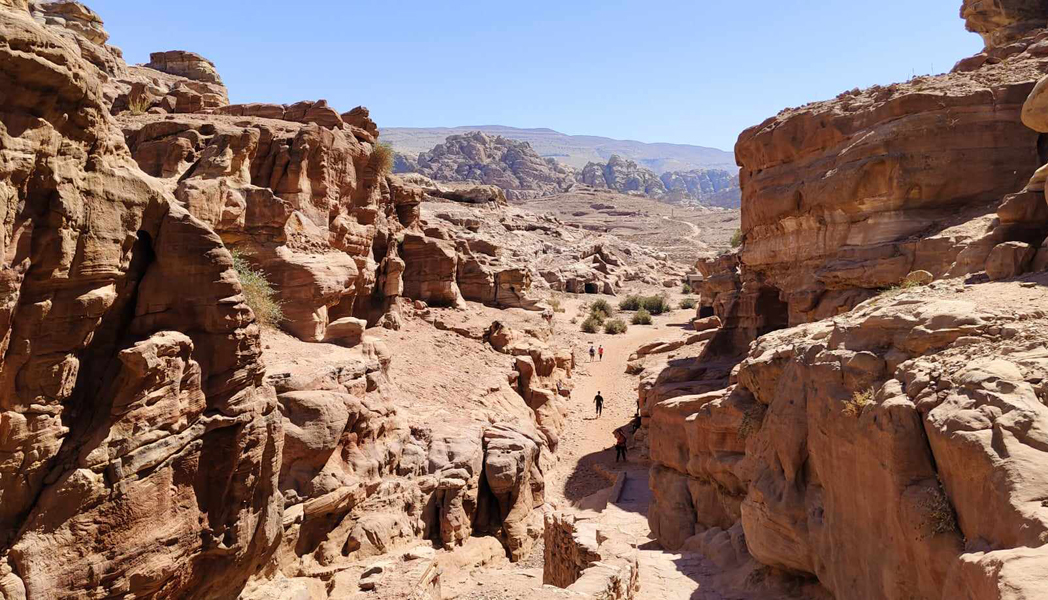
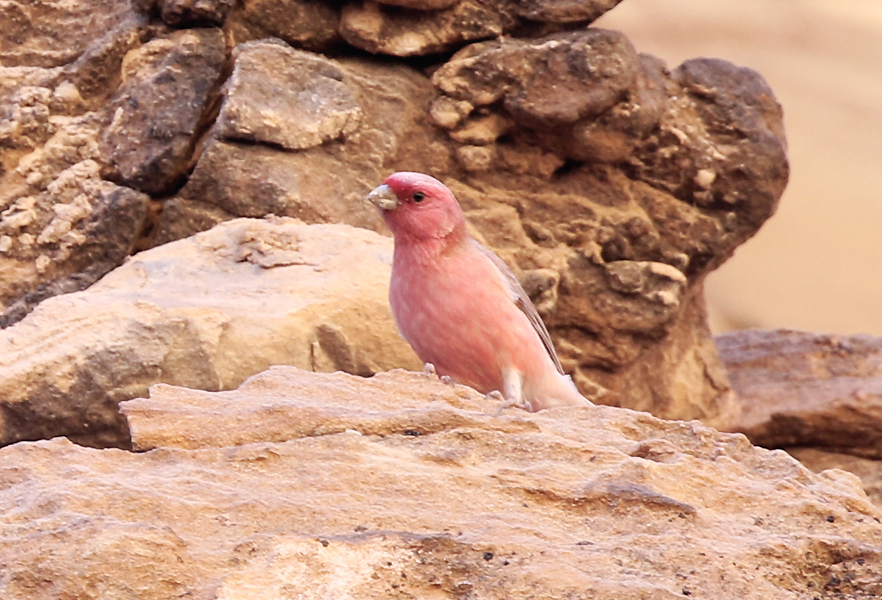
 Posted in
Posted in  Tags:
Tags: 
